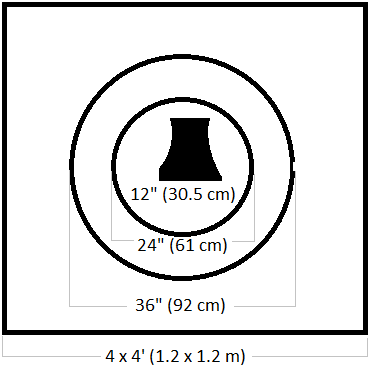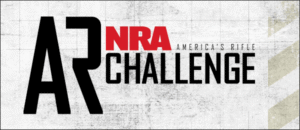February 18th 2022
British Lee-Enfield Model SHT’22/IV Rifle, courtesy www.iCollector.com.Our friend Dennis Santiago was a technical advisor for History Channel’s Top SHOT TV show. Dennis Santiago was a technical advisor for History Channel’s Top SHOT TV show. One of the most memorable Top Shot episodes featured the “Mad Minute”, which is a marksmanship drill that was used by the British Army in the decades prior to World War I. He observed that Top Shot competitors did not score many hits in the allotted time period. Dennis decided to give it another go, and see how many hits he could get with an authentic Lee Enfield rifle. Dennis tried the drill out at a California range a while back. He is an active high-power rifle competitor and instructor. However, it takes practice to master this skill. Dennis says, “Here’s a ‘Mad Minute” drill using a Lee-Enfield (SMLE), No.1 MkIII rifle and Mk7 ammo. On the second run, I hit the Queen’s Regulations (15 hits per minute) and got a good group of targets at 200 yards. This is a ‘jolly good time’ that you can do once in a while. This is ‘living history’ – you’ll be able to experience a skill from a time before the sun set on the British Empire.
British Lee-Enfield Model SHT’22/IV Rifle, courtesy www.iCollector.com.Lee-Enfield No. 4 Rifle (1943), courtesy Arundel Militaria. “Mad minute” was a pre-1945 term used by British Army riflemen to describe scoring at least 15 hits on a 12? A bolt-action rifle (usually a Lee Enfield or Lee Metford rifle) is used to round a target at 300 yards in one minute. It was not unusual for riflemen to exceed this score during the First World War. The record was set by Sergeant Instructor Alfred Snoxall in 1914 with 38 hits. (From WikiPedia. Want to see more “Mad Minute Action” with a Modern Tubegun
Gary Eliseo conducted a “Mad Minute”, 2012 exercise with a modern,.308-Win Eliseo RTM Tubegun he made. Gary had 24 hits on a bull target at 300 yards. Gary actually had 25 hits in 25 rounds, but the last round was fired just after the 60 second time limit expired. Notice how Gary pulls the trigger using his middle finger of right hand. This allows him to use his thumb and index fingers to pull the bolt faster. CLICK HERE to read the Eliseo Tubegun Mad Minute Story. NOTE: It is interesting to note that Dennis Santiago was actually in Eliseo’s pits pulling targets for Gary during the 2012 “Mad Minute”. History of the MAD MUTE
Commentary by Laurie Holland (UK Shooter)
The original military requirement for the “Mad Minute” was that the soldier be ready to fire with one round in the chamber, nine rounds in the magazine, and safety on. The GB Historic Breechloading Arms Association, along with other bodies participating in the “Mad Minute”, still follow this course of fire. Although the first 10 rounds were quick, reloads were crucial. This was not done through a magazine change like Gary did with his RTM, or in a modern tactical rifle or semi-auto rifle. Instead, it was done using ‘chargers’. This aspect is what frightens many of my colleagues. It is easy to cause jams and it can take up to 60 seconds to get it fixed. The charger clips were chosen for holding the rounds securely enough to prevent them from falling out. They were sand-papered with a stove or fireplace polish called “Zebrite” so that the rimmed rounds would slide through the clips like corn through the ears of a goose. It seems awkward if you are not familiar with the Enfield cock-on closing action. It is extremely easy to use and very smooth with a lot of practice. It is possible to whip the bolt onto its stop and instigate a rebound movement that takes the cartridge well into chamber. This reduces the effort required to close bolt and chamber the round.
“Mad minute” was a pre-World War I term that British Army riflemen used to describe their ability to score a minimum of 15 hits at 300 yards in a matter of minutes using a bolt-action rifle (usually a Lee-Enfield rifle or Lee-Metford rifle). It was not unusual for riflemen to exceed this score during the First World War. The record was set by Sergeant Instructor Alfred Snoxall in 1914 with 38 hits.
Royal Scots Fusiliers soldiers train using the SMLE Mk III Lee-Enfield firearm. This drill was listed as “Practice number 22 Rapid Fire” in The Musketry Regulations Part I 1909. It required at least 15 shots at the Second Class target at 300 meters. This was one of many annual tests that could be used to classify soldiers as sharpshooters, first or second-class shooters depending on how many points were achieved. Research suggests that the Second Class target was 48? 48 x 48? Square with 24? Inner circle and 36? Inner circle and 36? The sight mark was a central 12. 12? x 12? The shape represents a soldier. ALL hits earned points (3 for center circle; 2 for outer circle; 1 for outer square). NOTE: Some sources claim that the Mad Minute drill used an outer circle target of 12? diameter. However, this is a mistake according to Ian Hogg’s book “The Encyclopedia of Weaponry”. A 12? diameter target is not mentioned in any other source. The circle would be just 3.82 MOA. The drill target was actually 48? 48 x 48 Square, approximately 15 times larger. (From No.WikiPedia. (From No.WikiPedia.

















